
views
Examining the Lumps

Look for lumps on the belly. Hamsters can develop different types of tumors as they grow older. Lymphoma, which is a cancer of the immune system, is a common tumor in hamsters. It can affect many internal organs and lymph nodes, resulting in the formation of lumps in the belly. If the lumps are large enough, you would be to see and feel them. Lymph nodes are small nodules located throughout a hamster’s body. They are part of the immune system. Lymphoma that affects the belly is common in young hamsters. It is caused by a virus called Hamster Polyomavirus. Female hamsters can develop mammary tumors. Mammary glands are the small nipples that run lengthwise down a female hamster’s chest and belly. Mammary tumors look like large masses.

Watch for lumps in the armpit and neck. Lymphoma commonly causes swelling of the lymph nodes in the armpit and neck. If you see lumps in your hamster’s neck and armpits, the lymph nodes in those areas are likely swollen with cancer cells.

Check for wart-like lumps on the skin. Hamster Polyomavirus can also affect the skin. This virus causes little wart-like tumors called trichoepitheliomas to form on the skin. These skin tumors are most common in adult hamsters. A hamster infected with Hamster Polyomavirus can develop mange, a skin condition caused by tiny parasites called mites. If your hamster has mange, its skin will be scaly and itchy.
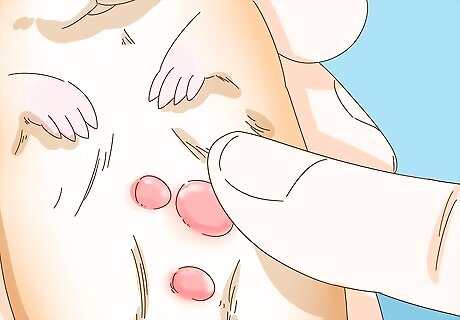
Examine the lump for redness and heat. Hamsters can develop other lumps called abscesses, which are pockets of infection. When diagnosing a tumor in hamsters, it is important to make sure the lump is a tumor and not an abscess. An abscess will be red and maybe even warm to the touch, indicating infection and inflammation. It may also drain. A tumor probably won't be red or feel warm. However, some tumors might show signs of inflammation and infection. Your vet will be able to determine whether the lump is an abscess or a tumor.

Notice how quickly the lumps grow. In hamsters, tumors tend to grow very quickly. If you see a lump on your hamster that suddenly gets bigger, your hamster likely has a tumor.
Observing Other Physical Symptoms of a Tumor

Detect a decreased appetite. When a hamster has a tumor, it will probably eat less. You will know if your hamster is eating less if it doesn’t finish all the food you normally feed it at meal time. Also, your hamster may not want to eat the treats it usually enjoys. If your hamster is eating less, it will also lose weight. Weight loss is common in hamsters with tumors.
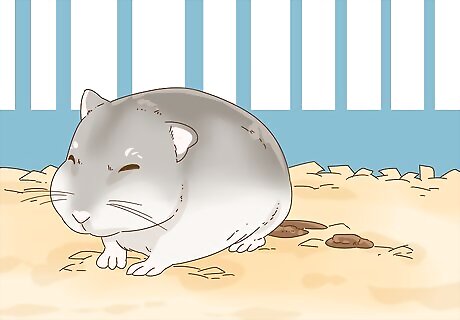
Take note of digestive upset. Lymphoma in the digestive organs (e.g., stomach, intestines) can cause signs of digestive upset, especially diarrhea. You will not see vomit, because hamsters cannot vomit.
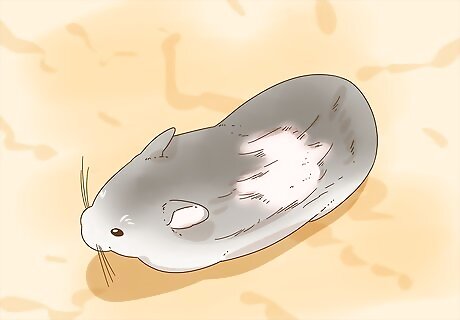
Check for hair loss. Commonly, hamsters get tumors in glands (adrenal, thyroid) that produce hormones. Thyroid and adrenal tumors disrupt the normal balance of hormones in your hamster’s body. One result of this hormone imbalance is hair loss. Lymphoma in hamsters can also cause hair loss. This hair loss is patchy.
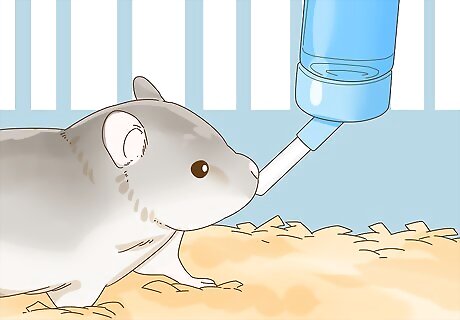
Determine if your hamster is extra thirsty. Thyroid and adrenal tumors can also make a hamster extremely thirsty. If you are refilling your hamster’s water bottle more frequently than usual, your hamster might have a thyroid or adrenal tumor.
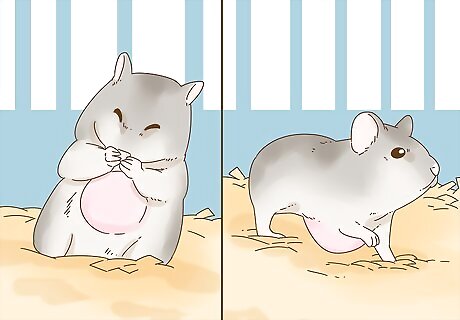
Watch for changes in behavior. The physical discomfort of a tumor could cause a hamster to start acting strangely. For example, your hamster may groom the area of the tumor to the point of causing baldness or injury. Your hamster may also start walking strangely if the size of the tumor makes walking difficult. Your hamster may also become very weak. It will not be as playful as it used to be.
Getting a Veterinary Diagnosis
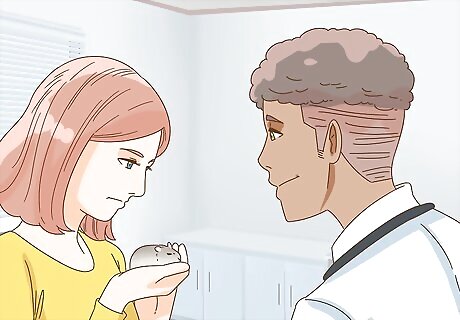
Take your hamster to your vet. As soon as you see a lump on your hamster, take your hamster to your small animal vet. Since tumors can grow quickly, you do not want to wait and see if the lump goes away on its own. The sooner you can get your hamster to your vet, the sooner your vet can diagnose and treat the tumor. Not all vets are comfortable seeing hamsters. Be sure to take your hamster to a vet that specializes in small animals. Otherwise, call the clinic ahead of time to see if they treat hamsters. Ask for recommendations if the clinic you call doesn't take small pets. During the appointment, give your vet a full history of your hamster, including when you first noticed the lumps and what other symptoms you observed. Also, tell your vet about your hamster’s normal diet and if your hamster has had any previous illnesses.
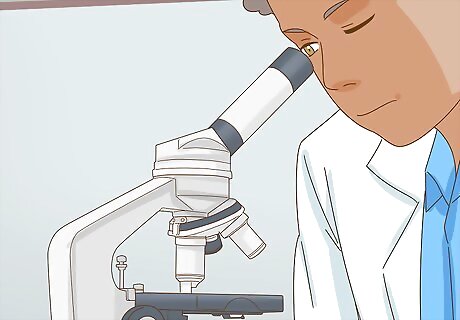
Allow your vet to take a tumor sample. The best way to diagnose a tumor is to analyze a small sample of it. This sample is called a biopsy. Your vet will anesthetize your hamster to take a biopsy. Next, they will send the biopsy to a veterinary expert who will analyze it and determine the tumor type. It will probably take at least a few days before your vet receives the results of the biopsy.

Discuss treatment options. After diagnosing a tumor in your hamster, your vet will want to discuss different treatment options with you. If the tumor is on your hamster’s skin, your vet will likely be able to surgically remove it. However, tumors inside the body may be difficult to remove, especially if they are really big.



















Comments
0 comment